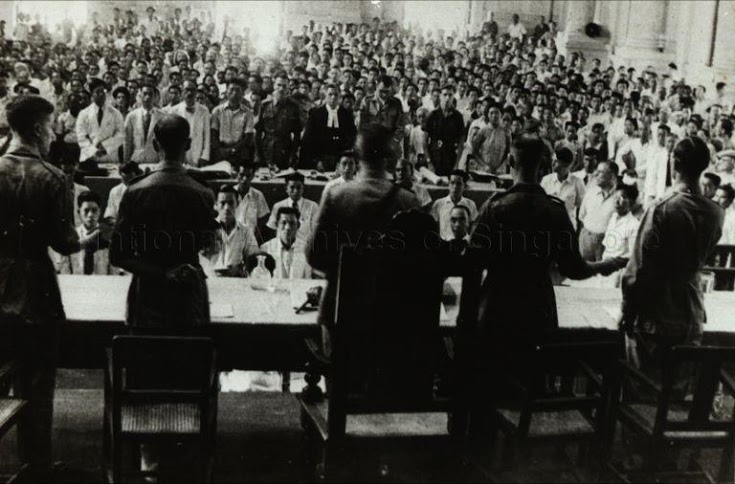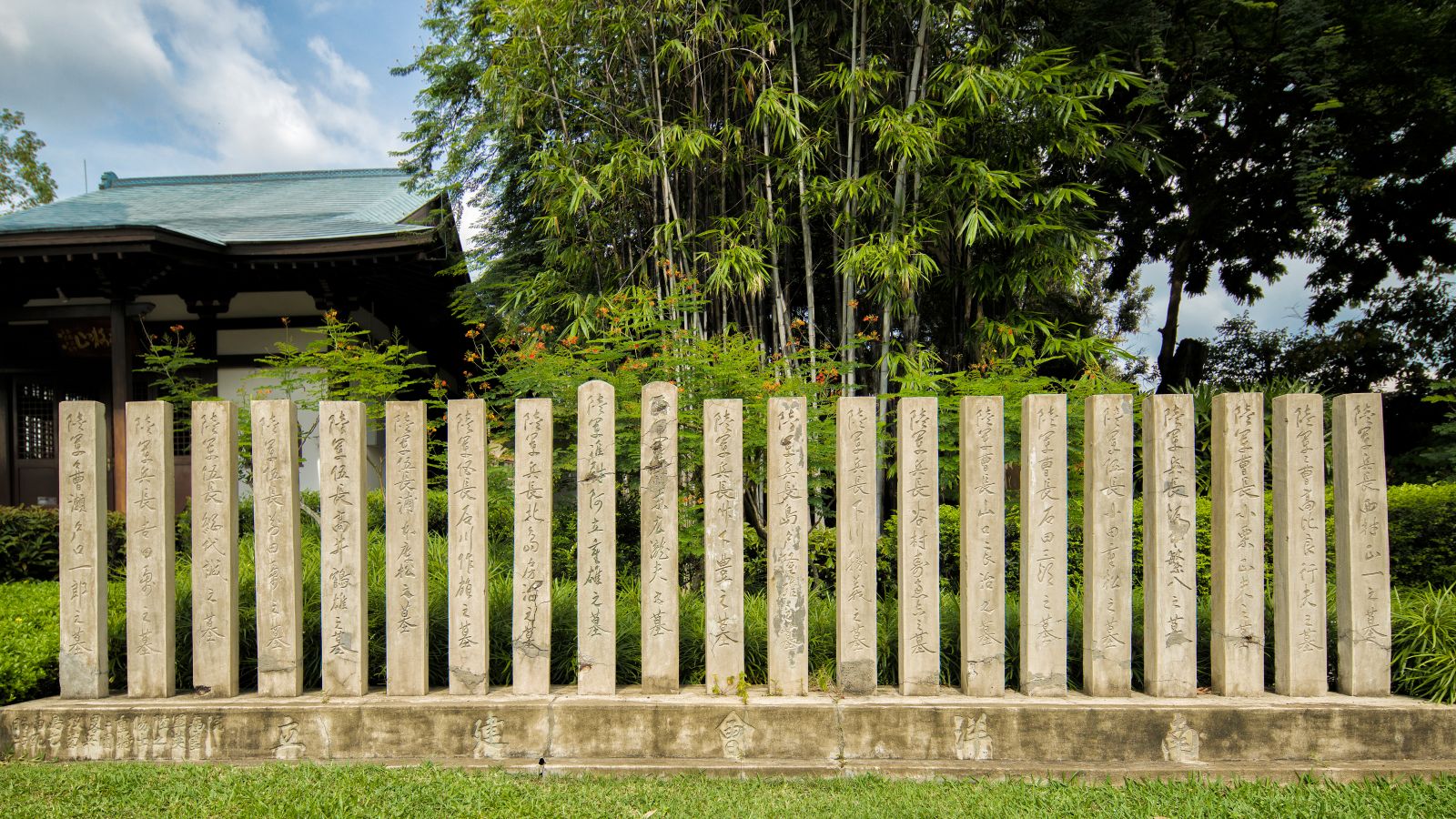POST-WWII JUSTICE
During the war, the US, Britain, the Soviet Union and China adopted a declaration at the 1943 Moscow Conference proclaiming their intention to “act together” on “matters relating to the surrender and disarmament” of their “common enemy”. At the same Moscow Conference, the US, Britain and the Soviet Union also adopted a Statement of Atrocities. In this Statement, the Allies declared their intention to punish German and Nazi war criminals. Those suspected of war crimes would be sent back to the countries where they had committed their crimes and “judged on the spot by the peoples whom they have outraged”. Those whose crimes had “no particular geographical localization” would “be punished by joint decision of the government of the Allies”. This Statement of Atrocities originally applied to Nazi crimes but was later extended by the Allies to apply to crimes linked to Japan's war in Asia.
The Allies also established the United Nations War Crimes Commission (the UNWCC) in 1943. The UNWCC collected evidence on Axis war crimes and drew up lists of suspected war criminals for Allied prosecution after the war. In 1944, a sub-commission of the UNWCC was established in Chungking to focus on the investigation of Japanese atrocities.
By the later part of 1945, the Allied Powers had agreed on war crimes trials as a means of pursuing justice. This set the stage for post-WWII trials. A select group of higher-ranking military and political Axis leaders would be jointly tried by the Allies at the Nuremberg Trial (20 November 1945 (indictment lodged on 18 October 1945) to 1 October 1946) and the Tokyo Trial (3 May 1946 (indictment lodged on 29 April 1946) to 12 November 1948). In addition and separate from the Nuremberg and Tokyo Trials, individual Allied Powers and countries held national trials of Axis defendants in various locations, including Singapore.

Image Courtesy of Tham Sien Yen Collection, National Archives of Singapore.
POST-WWII ALLIED PROSECUTIONS IN ASIA
On 26 July 1945, the Allies called for Japan's surrender by issuing the Potsdam Declaration. Allied intentions to pursue justice for Japanese atrocities were most clearly communicated to Japan in this declaration issued by the US, Britain, and China. This declaration contained the terms of surrender offered by the Allies to Japan. It stated that while the Allies did not “intend that the Japanese shall be enslaved as a race or destroyed as a nation”, “stern justice” would be “meted out to all war criminals”. On 2 September 1945, Japan accepted the Potsdam Declaration’s terms of surrender.
Upon Japan’s surrender, the Allies began organising war crimes investigations and prosecutions throughout Asia. At the Tokyo Trial, the Allies prosecuted only 28 high-ranking ‘Class A’ suspects from various government and military departments on charges linked to the waging of war and war crimes. Hundreds of lower-ranking ‘Class B’ and ‘Class C’ suspects of diverse ranks were prosecuted at other Allied trials operating across Asia.
It is hard to arrive at the exact number of Allied trials held in Asia, as there continues to be access restrictions to some national trial records. Some latest estimates of the number of war crimes trials held by different national authorities in Asia are as follows: China (605 trials), the US (456 trials), the Netherlands (448 trials), Britain (330 trials), Australia (294 trials), the Philippines (72 trials), and France (39 trials). In 1956, China prosecuted another four cases involving 1062 defendants, out of which 45 were sentenced and the rest acquitted. The Allies conducted these trials before military courts pursuant to national laws of the Allied Power concerned. Altogether 2244 war crimes prosecutions were conducted in Asia. 5700 defendants were prosecuted: 984 defendants were executed; 3419 sentenced to imprisonment; and 1018 acquitted.

POST-WWII TRIALS IN SINGAPORE
After WWII, apart from participating in the Nuremberg and Tokyo Trials, the British conducted national war crimes trials (the Singapore Trials) pursuant to a 1945 Royal Warrant adopted by the British executive under royal prerogative powers (1945 Royal Warrant). The British military was given the responsibility of implementing these trials in different locations across Asia and Europe. 330 trials were organised by the British military in Asia. Of these, 131 trials were conducted in Singapore.
As of mid-1946, the British military had established 12 war crimes courts in Singapore, Kuala Lumpur, Rangoon, Hong Kong, and Borneo. Eight of 12 courts established were located in Singapore. There were also ‘travelling courts’ that made their way to particular locations to hear a case.
Singapore served as the base for the British military's war crimes investigations and prosecutions in Asia. Investigations were conducted out of Goodwood Park Hotel. Post-war conditions in Singapore posed many challenges to the organising of these trials. There was a shortage of food, basic necessities, and qualified personnel in post-war Singapore.
Trials conducted in Singapore concerned not only Japanese military atrocities perpetrated in Singapore but those committed in other parts of Asia (see Chart below).
.png)